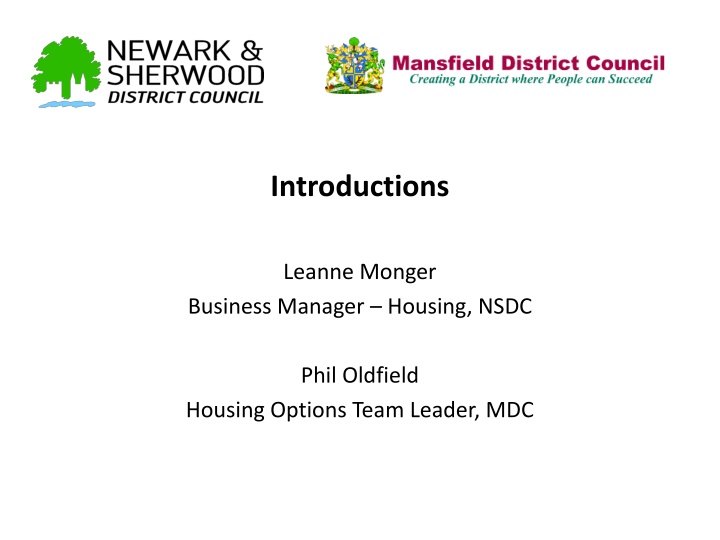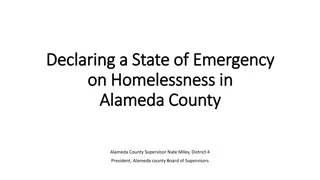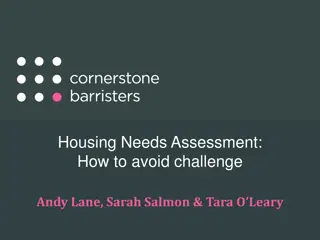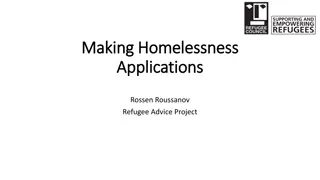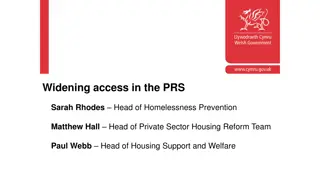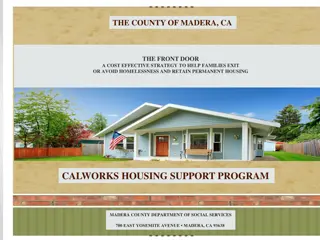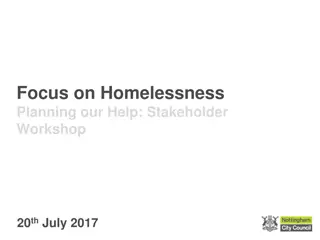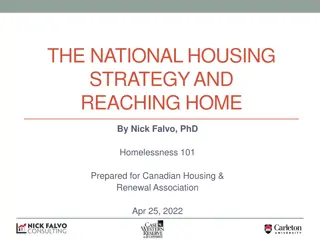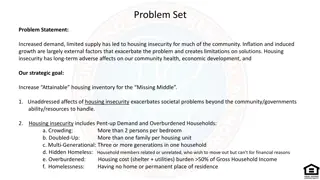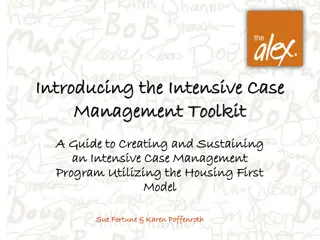Addressing Homelessness and Housing Challenges in Nottinghamshire
Leanne Monger, Business Manager Housing, and Phil Oldfield, Housing Options Team Leader, play key roles in managing housing issues in Nottinghamshire. District/Borough statutory responsibilities highlight the duty of councils to assist households in housing need. Homelessness statistics reveal the impact on families and children. Reasons for single homelessness include family disputes and tenancy issues. Health issues among homeless households underscore the importance of support. Local actions, like the Joint Homeless Strategy, aim to prevent homelessness and address welfare needs.
Download Presentation

Please find below an Image/Link to download the presentation.
The content on the website is provided AS IS for your information and personal use only. It may not be sold, licensed, or shared on other websites without obtaining consent from the author.If you encounter any issues during the download, it is possible that the publisher has removed the file from their server.
You are allowed to download the files provided on this website for personal or commercial use, subject to the condition that they are used lawfully. All files are the property of their respective owners.
The content on the website is provided AS IS for your information and personal use only. It may not be sold, licensed, or shared on other websites without obtaining consent from the author.
E N D
Presentation Transcript
Introductions Leanne Monger Business Manager Housing, NSDC Phil Oldfield Housing Options Team Leader, MDC
District/Borough Statutory Responsibilities Governed by Part 7 of the 1996 Housing Act as amended by the 2002 Homelessness Act Many single homeless individuals will fall outside of this duty Councils have a responsibility to provide advice and assistance to all households and individuals in housing need within our communities
Homelessness Statistics During 2012/13, Nottinghamshire: made 1,016 homelessness decisions accepted 500 households as homeless 98 accepted households were homeless as a result of the breakdown of a violent relationships involving their partner (40 in a non-violent relationship) 80% of accepted homeless households were lone parent families On average, each quarter saw 107 households awaiting permanent accommodation; 65 of these households had dependent or expected children On average 155 children or expected children were living in temporary accommodation at any one time The length of stay for families in temporary accommodation varied from between 5 to 13 weeks
Reasons for single homelessness Families unwilling to accommodate Substance abuse Relationship breakdown Tenancy breakdown - Repossession Discharge from prison / hospital
Health issues statutory homeless households Precarious housing circumstances and homelessness have a negative impact on physical health, mental health and wellbeing for all affected households. Homelessness can affect different household members in many different ways. Adverse impact of disruption, trauma, homelessness during childhood and adolescence in later life.
Local Action example of practice Joint Homeless Strategy Homeless Prevention actions Hospital Discharge Private-rented access schemes (M.A.R.S. [with NSDC] + S.O.L.A.R.) Welfare, wellbeing and health needs
Overview - Housing Chapter of the JSNA and the Housing Commissioning Group Delivery Plan Poor housing conditions home security. Insufficient suitable housing Homelessness and housing support Children and young people.
